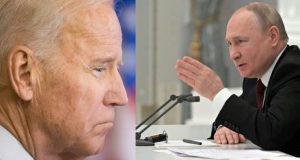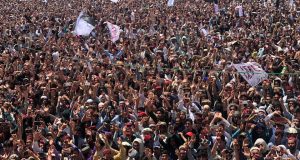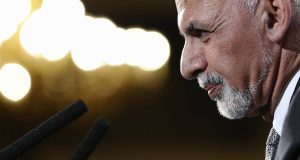 The Transformational leadership focuses on leaders who take control of the situation by conveying a clear vision of the group’s goals. An American historian and political scientist, James MacGregor Burns, who was one of the first thought leaders to embark on a more philosophical approach to the understanding of leadership, Suggested, that “we need to step back from our over-emphasis on power and see it in the context of human motives and physical constraints.” He further argued that transformational leadership can be seen when “Leaders and followers make each other advance to a higher level of moral and motivation.” While arguing about moral and motivation, he added that “Leadership is a relationship of power for a specific purpose that is consistent, or eventually consistent, with the motives, needs, and values of both the leader and the led.” Looking at the concept of transformational leadership by Burns, one can reasonably argue that it’s a process in which a person interacts with others and is able to successfully establish relationship that results in a high percentage of trust and consequently leads to an increase of motivation. Manzoor Ahmad Pashteen fits well in this context.
The Transformational leadership focuses on leaders who take control of the situation by conveying a clear vision of the group’s goals. An American historian and political scientist, James MacGregor Burns, who was one of the first thought leaders to embark on a more philosophical approach to the understanding of leadership, Suggested, that “we need to step back from our over-emphasis on power and see it in the context of human motives and physical constraints.” He further argued that transformational leadership can be seen when “Leaders and followers make each other advance to a higher level of moral and motivation.” While arguing about moral and motivation, he added that “Leadership is a relationship of power for a specific purpose that is consistent, or eventually consistent, with the motives, needs, and values of both the leader and the led.” Looking at the concept of transformational leadership by Burns, one can reasonably argue that it’s a process in which a person interacts with others and is able to successfully establish relationship that results in a high percentage of trust and consequently leads to an increase of motivation. Manzoor Ahmad Pashteen fits well in this context.
In his speeches he strongly demonstrates willingness to fight and die for liberation of his people and their basic human rights. The essence of his leadership is that he transforms his followers through his inspirational nature and charismatic personality. He is highly driven by his morality and justice than money or power to bring change. His rules and regulations are guided by group norms and traditional values. These attributes provide a sense of belonging to his followers and in return they easily identify with him and purpose. Not only Pashtoon but the main stream media has also given him courage where he is often compared with different influential leaders around the world such as Che Guevara, Bacha Khan and Martine King Luther.
The Guardian wrote “Although Pashteen is committed to non-violent protest, his youthfulness, firebrand speeches and distinctive headgear have drawn comparisons with Che Guevara.” I would do another comparison between Manzoor and Che. They both are Medical Doctors. Che from a medical student, transformed into a soldier to fight for the cause of poor and oppressed, while Manzoor from medical doctor transformed into a social activist to fight for poor and oppressed. Essence of their struggle is the same. Politics of 19th century demanded more of violent approaches while the 21st century is based on more of diplomatic and non-violence. Manzoor is following non-violence approach which is playing an integral role of reshaping and breaking the stereotype about his nation’s from being war-lovers to peace-lovers.
Irrespective of who he resembles what is needed today, more than ever is courageous leaders who can put an end to prevailing violence in Federally Administered Tribal Areas (FATA). This region need a leader to speak up for them, represent them and demand justice to all the injustices done to them. The status quo sees Manzoor the hope for FATA because likewise any other great leader Manzoor also possess unique traits which distinguish him among others.
Transformational leadership style of Pashteen
- Visionary
Pashteen’s beliefs and behavior empowers him to move purposefully in a predetermined direction. He is aware of the sufferings of his people and clearly demands recognition of their basic human and political rights, without any self-serving bias.
- Courageous
He has the courage to make difficult decision necessary to achieve his goals by following his vision. He raises difficult issues, makes bold remarks and provide tough feedback and demonstrates reasoned judgment.
- Self-motivative
Pashteen is self-motivated. He voluntarily chooses to fight for his people since for him, problems of his people are his own problems, He steps into the shoes of his people and view things from their angle. He is not supported by any political party or any international actor
- Inspirational:
He communicates clearly, concisely and narrates stories very well. He observes events objectively, gains consensus of his people and make them to work together efficiently and effectively as a team to bring about change. He is leading by example - Honest
He is an authentic leader to his core. He is genuine and honest and does not have any primitive need for power or attention that lends to his to credibility not only among his people but around the world.
I have been following Manzoor since January 2018, and the above list that I provided is based on my understanding of his main or common traits, yet I would like to admit that I don’t think his qualities are limited to this list. He possesses a lot more than that. He is the hope of hopeless and hero to many who look up to him. The iconic image- him wearing red and black patterned cap which has become a symbol of peaceful protests-his cap is known as Manzoor’s Cap.
He is attracting more and more people consistently; his struggle is gaining attention around the world. The future is a complex and difficult to predict, but I love what he said in one of his interviews, “I am often told that I need to read the history of Pashtun people extensively to draw the right lessons from it. I, however, say that we have set out on a path to make a new history of our own, a history our future generations will be proud of. Our movement arose from within society; we know our pain and have the right prescription to treat it. The long night of terror and oppression must end with the onset of a bright morning of peace and prosperity,” in his words person can see that his ideology is based on the truth he has seen, the suffering he went through and not on what he read or heard from others. This makes him stand apart from others. I hope Manzoor will write a history of his own and that too a great one.
By Huma
The writer is an Afghan-Canadian writer. She writes for BBC Pashto and other online news portals. Huma holds master’s degrees in International Relations and Political Science.
 Pashtun Times Latest News
Pashtun Times Latest News



